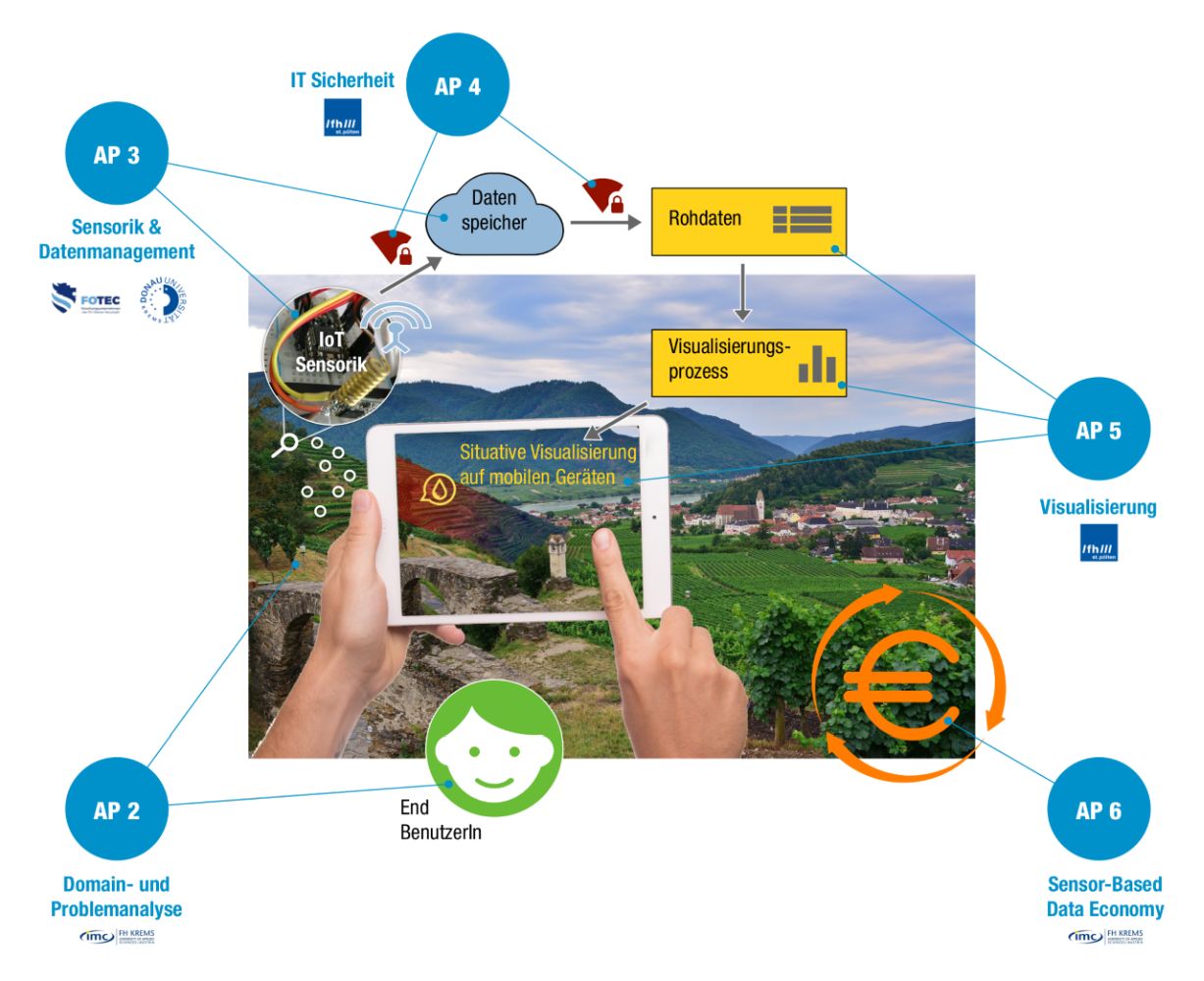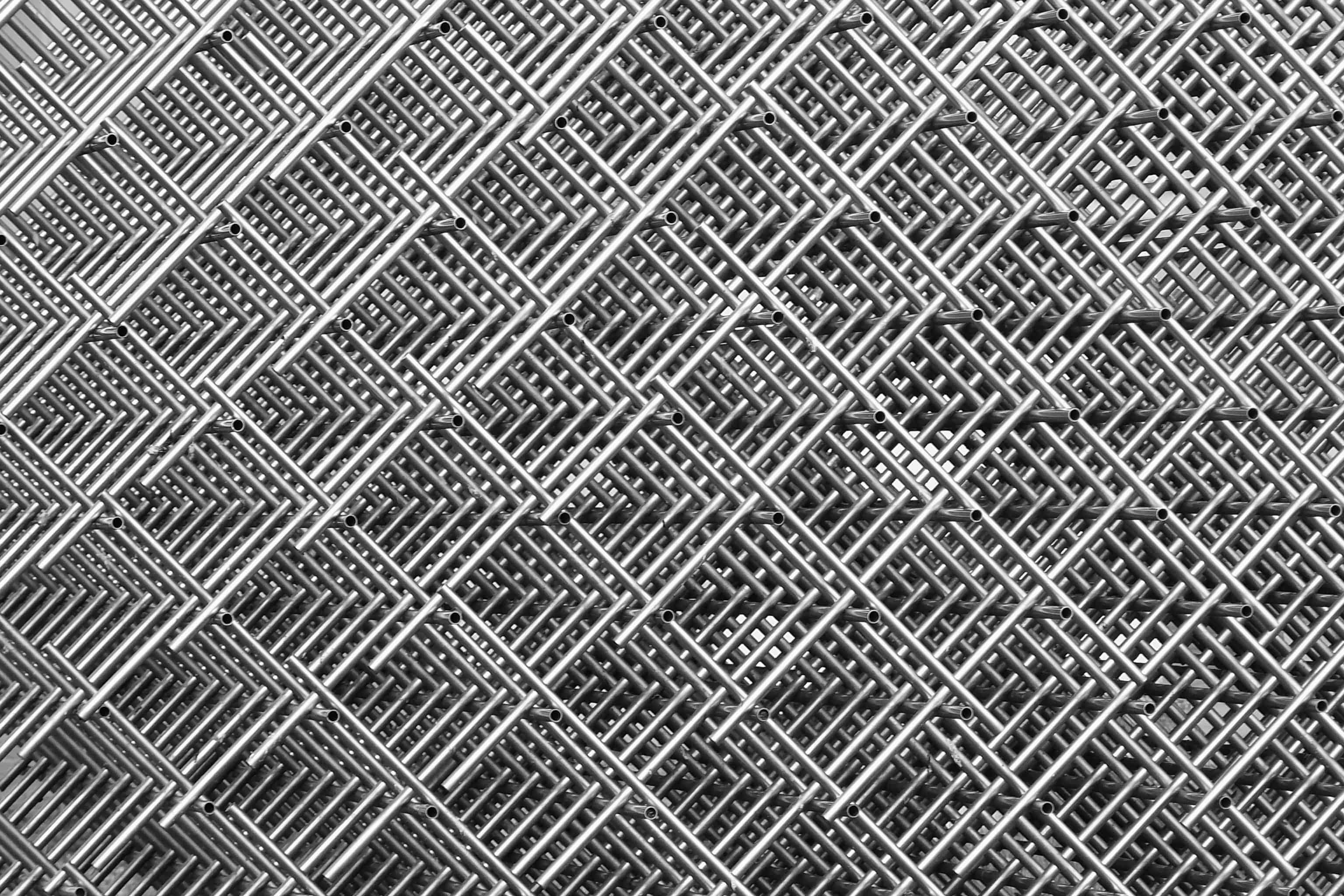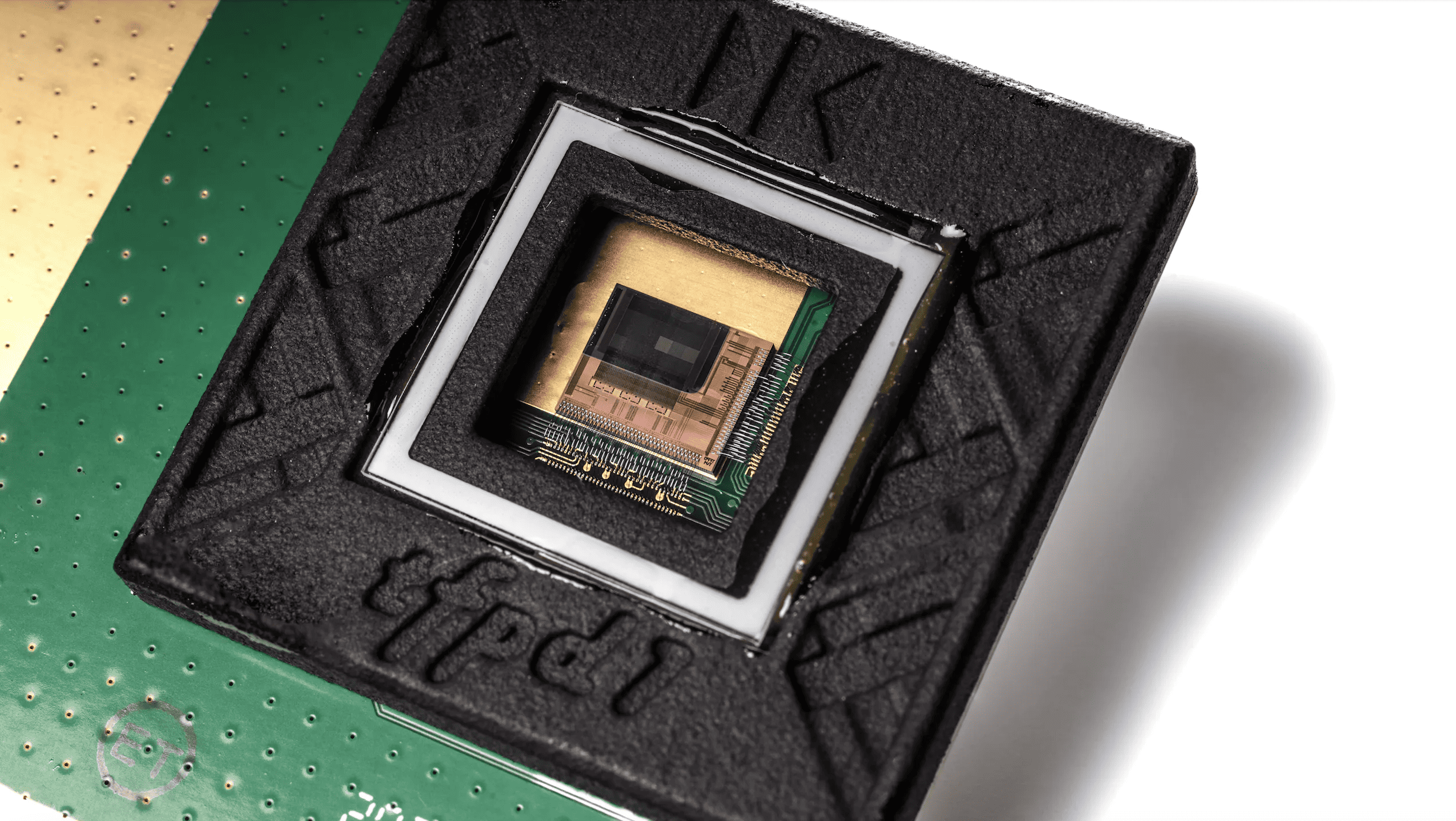
Wouldn’t it be practical if you could assess the exact condition of buildings very easily from the outside by looking at pictures? If cracks in the masonry, mold or pest infestation were visible without the need for precise, physical inspections? The “Dataskop” research project coordinated by the University of Applied Sciences St. Pölten, Austria, makes exactly that possible. It makes invisible sensor data of the environment visible to people by means of augmented reality.
These mobile data visualization methods embedded in the environment combine the physical environment with abstract data representations and could play an important role in the future, and not only in the protection of historic buildings. “Dataskop” could also play a decisive role in areas such as disaster control, agriculture, viticulture, the drinking water supply or winter road maintenance. But at the moment, scientists are primarily interested in preserving historic buildings or assessing the condition of buildings after earthquakes, for example.
The challenge of data protection
“Dataskop” is designed to make data visible that cannot be seen with the naked eye. This is similar to looking through a microscope to make tiny things visible or a telescope to show things that are too far away for the eye to see. To do this, sensors are used to collect and display location-based environmental data. Researchers are currently brainstorming ways they could use sensors and sensor data visualization at historic sites and objects to better monitor and preserve the sites. For example, sensors could capture various data on such things as moisture, cracks in the walls, shocks, vibrations and broken glass.
“Challenges here include security and privacy, a lack of common tools and terminology in the field of data visualization and cultural heritage protection, and identifying who is responsible for such sites and objects,” says Wolfgang Aigner, who is coordinating the project and heads the Institute for Creative Media/Technologies at St. Pölten UAS in Austria.
Earthquake-proof reconstruction of historic buildings
Specifically, the researchers see the interdisciplinary “School of Reconstruction” in Accumoli, Italy, led by the University of Continuing Education Krems, as a field of application. This region in central Italy was rocked by a series of earthquakes in 2016 and 2017 that destroyed entire towns. Since then, various universities and research institutions have been focusing their teaching and research activities on how the cities could be rebuilt. The aim is to make the historic buildings quake-proof as well as to sustainably revive the economic, social, cultural and religious structures.
“In Accumoli, we have ideal test conditions for the sensors, LP-WAN communication technology and sensor data visualization developed in the project,” says Albert Treytl, head of the Center for Distributed Systems and Sensor Networks at the University of Continuing Education Krems. “Here we expect to gain significant insights into the practicality and improvement of the monitoring and preservation of cultural assets and buildings through digitization.”
“New techniques for visualizing location-based environmental data”
The ideas, potential applications and identified challenges gathered in project workshops would be used in the next step to design useful technical demos to support experts in the field, the researchers explain. Later, they plan to “develop and evaluate new techniques for visualizing location-based environmental data.”
The project team has also installed disinfectant dispensers in buildings at the University of Continuing Education Krems using a sensor system to measure the battery level and the level of disinfectant in the dispensers. Another use case is a testbed for IT security to test security vulnerabilities of a LoRaWAN network at the University of Applied Sciences St. Pölten.
The project, in which St. Pölten UAS is cooperating with IMC University of Applied Sciences Krems, FOTEC Forschungs- und Technologietransfer GmbH in Wiener Neustadt, Vienna, and the Department of Integrated Sensor Systems at the University of Continuing Education Krems, also located in Wiener Neustadt, is funded by the state of Lower Austria as part of its research, technology and innovation strategy (RTI strategy).
Also of interest:
New sensor system for fast and safe location of buried victims
Detecting environmental damage in forests with drones and sensors
Sensors reveal if you move the right way with your new hip








